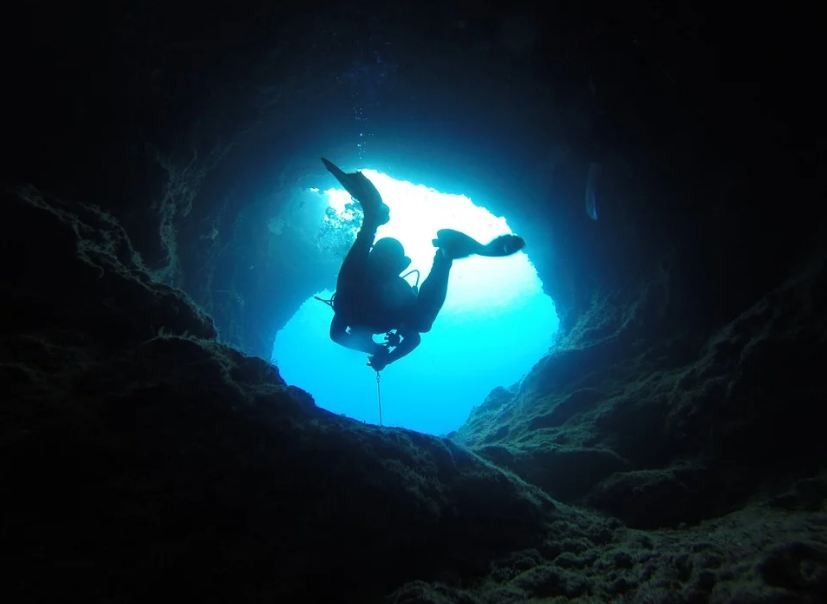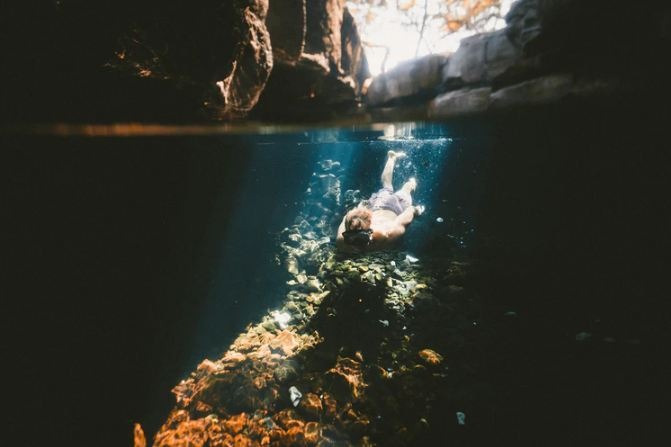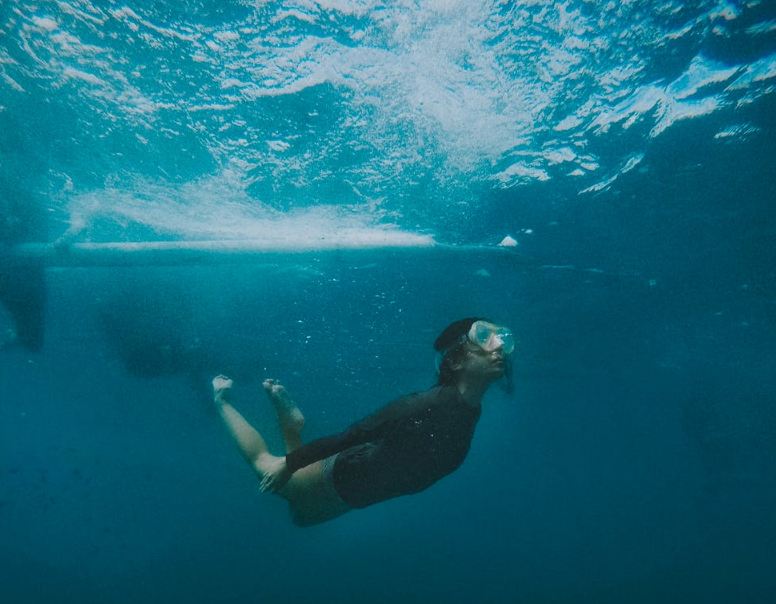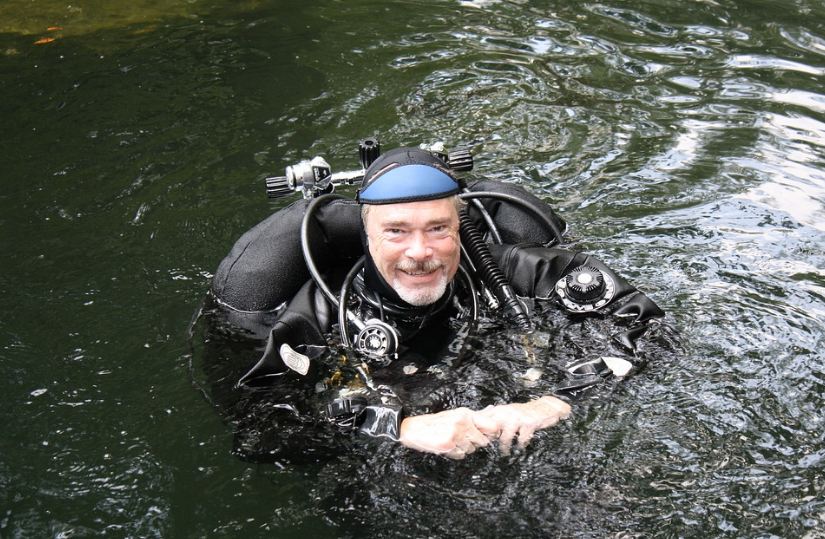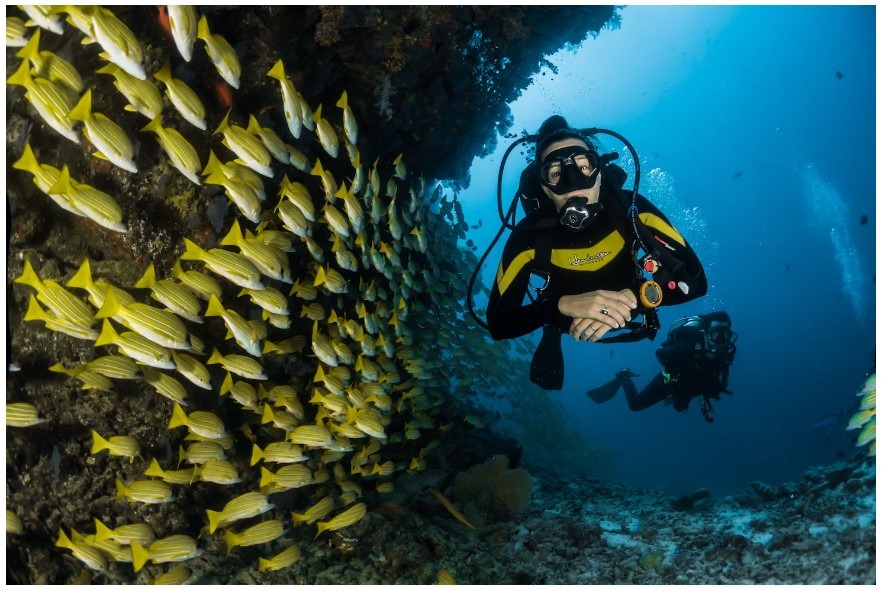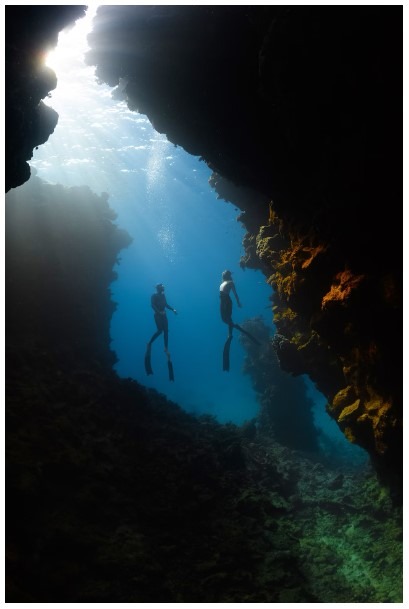Cave diving, as the name implies, is diving in underwater caves. People might engage themselves in cave diving for sports. Scientists may also be involved in cave diving for investigation purposes. As thrilling as this sport sound, it is as dangerous too. Divers sometimes get lost during cave diving, so trained people are sent underwater to search for them.
Origin of Cave Diving
The origin of cave diving was different in the United Kingdom and the United States. In the United Kingdom, it originated from the recreational activity of caving, while in the United States, cave diving originated from scuba diving.
However, cave diving originated from scuba diving and caving; this activity has a far smaller number of professionals than both. The reason behind the lesser number of professionals available for cave diving is the need for specialized equipment and skills. Not only is this, but the increased number of potential risk factors associated with this is another reason.
No Vertical Access to the Open Air
Because cave diving occurs in caves, the divers don’t have any vertical access to the open environment. You are locked in an underwater world that might haunt you.
Professional Cave Diving
As mentioned above, cave diving can be done for various reasons. The origin of professionalism in cave diving originated from the desire to explore deeper than any other human has explored before.
There are proper training sessions before cave diving so that you are completely educated about its pros and cons. Not only this but trainees are educated about how they can tackle the possible obstacles while cave diving.
Cavern Diving vs. Cave Diving
Cavern Diving
Some people confuse cavern diving with cave diving. But these two terms are used for different types of diving. Cavern diving is done in an open space, and divers are still within the territory of the sunlight.
The area defined for cavern diving is no deeper than 70 feet. It is within 40 meters of the cave entrance, so it is considered daylight diving.
Cave Diving
Cave diving, as already mentioned, is deep enough that no light can reach the area, and the diver does not have any direct vertical access to the open air. The water here may be dark enough to be nearly invisible because of the limited availability of light. Only 1% of the divers are trained to do cave diving.
What Attracts the Professionals towards Cave Diving?
Certain features that attract different professionals, including scuba divers as well as cavers to cave diving, are:
- The unexplored nature of the underwater caves.
- The expected presence of new species of fauna.
The Process of Cave Diving
The process of cave diving differs from that of open diving because of the difference in the environment. The underwater caves have lower gas availability and navigation differences. Another important difference is the inaccessibility of the diver to open space in the case of cave diving.
Cave diving is considered difficult because divers cannot find any open area with breathable air once down there. And the diver must escape before the breathing gas ends. The timely escape is ensured by using guidelines that connect the diver with the team above water.
The connection further ensures the possibility of effective regulating and monitoring of the gas supplies. Permanent or temporary lines might be used during the procedure.
Training
The training for cave training is a long and detailed process that prepares the individual to be ready for the process itself. The training sessions begin with the process of equipment selection and management protocols, including the emergency protocols and the gas management guidelines.
Depth rules are carefully taught so that they can have all the essential knowledge on the relationship between increasing depth and its management. Gas requirement, nitrogen narcosis, and decompression increase with increasing depth. The cave divers are educated so that they may not harm themselves by diving to the depths more than prescribed.
The process is carried out gradually, progressing from low height to the greater depths once trained completely. This allows the diver to learn and deal with the obstacles and struggles in a stepwise manner. The whole process is supervised by a highly skilled team consisting of professionals.
The Expertise of Cave Divers
Some skills are prerequisites for cave diving and are enlisted below:
- Having proficiency in controlling buoyancy.
- Command on body positioning.
- Familiarity with the process of navigation in the entire darkness.
- Emergency skills for coping with gas supply issues.
These are some important skills without which a cave diver may panic and put his life in danger. This is why cave diving requires a strict training program.
The Dangers of Cave Diving
1. No Direct Access to Open-Air in Case of Emergency
Cave diving is considered among the most challenging types of diving. It is dangerous because a diver does not have the opportunity to escape into the open air. He has to follow the guidelines in case of any emergency.
2. Non-Existent Visibility
Because of the limited availability of light deep in the underwater caves, the diver may reach the point where he cannot see anything. The visibility is low because sunlight cannot reach this level of depth. Other factors that may reduce the visibility are substances like clay, silt, and mud in the caves.
3. Strong Water Currents
Caves are known to carry strong water currents that need to be managed carefully by the diver for which he gets trained. In the case of improper management of the water currents, serious damages are likely to be caused to the diver.
4. High Chances of Getting Lost in the Cave
The diver is highly susceptible to getting lost in the cave because of the depth and absence of any light. This is the most dangerous thing a cave diver can encounter because of the limited breathable gas supply. However, there is a solution to this problem as well: just follow the guidelines. Arrows will help the diver spot the nearest exit.
Conclusion
Cave diving is one of the most dangerous activities in the world. People have been involved in scuba diving and cave diving, but only a small percentage of people have become a pro in cave diving because of the high risk involved.
The underwater caves are at a depth where there is only limited to no visibility at all because of the limited availability of sunlight and the presence of substances that further limit the vision.

